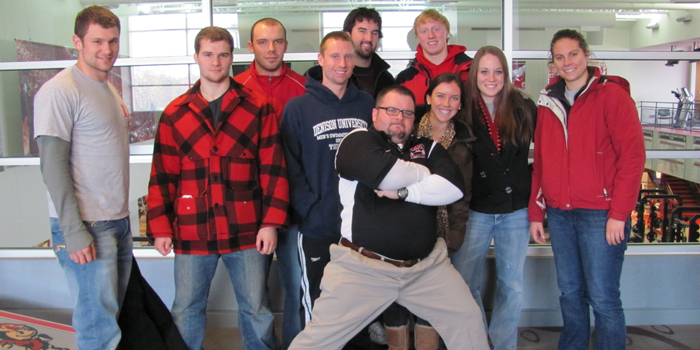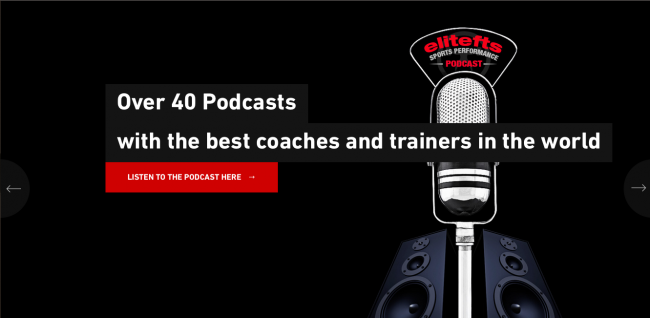
When looking at athletic development, coaches usually have several categories of physical preparation they feel are important. These qualities and skills collectively make an athlete what he or she is on the field or court from the standpoint of physical ability. These skills can vary depending on the sport or coach and what the coach feels is important. For example, a college lacrosse player should possess a degree of ability in the following categoires:
Speed
Agility
Quickness
Mobility
Explosive Strength
Maximum Strength
Strength Endurance
Aerobic Conditioning
Replace, remove, or add any physcial attributes you would like. The next step is to develop valid tests to measure and evaluate each of these components. If they are important they should be measured.
Measurement is Motivation
Then, there is the age old question that coaches often ask. Questions like:
"How strong is strong enough?"
"How flexible does this player need to be for the sport?"
"When will the player ever display maximum velocity on the field?"
You get the point. Looking at these skills and determining what is enough to be successful at the sport is important. Another component is determining what skills require the most physical training to improve. Finally, coaches must allocate their resources and training time amongst all of the components necessary for their athletes to be successful.
Mike Boyle has often referred to these skill sets or physical abilities as buckets. Athletes have a bucket for each skill. As we all know, each of an athlete's bucket is filled at different levels. To put a arbitrary scale of 1-10, you may have an athlete whose conditioning level is an 8 and maximum strength at a 4. Common sense tells us where the emphasis need to be in this young man or woman's training. But, common sense is not very common and add 45 more players with 6-10 buckets each and you'll see why programming takes so much effort.
It is up to the coach to determine what is a 10 and what is a 5 and how to compare these skills on a quantitative and reliable scale. Measuring max weights with max vertical on a standard scale is easier said than done.
Boyle's point is that there is a point where not much more can be placed in a bucket. He is certainly not saying that an athlete can be fast enough or strong enough, but that effort to increase a skill which the bucket of overflowing takes away for time and energy to increase the level of other buckets. We only have some much to fill them.
Boyle also explains that max strength is what can increase the size of all the buckets and conditioning levels can increase how much we have to fill those buckets with. or visa versa. Hopefully you get the analogy.
Westside at West Point
One of the best examples I can give give with the bucket concept happens when I was an assistant strength and conditioning coach at the United States Military Academy. I was in charge of Wrestling, Baseball, Softball, Mens and Womens Soccer, and Sprint Football. I have had some of the strength team (student interns) on the Powerlifting team and I would head over to see them train. I developed a relationship the Powerlifting coach and said he had ties with Louie Simmons. I was heavily influenced by Louie, Dave, and Jim, so we had a common interest. The only thing was he would put me in a bad spot and be very critical of our programming with our athletes on the athletic side. Now, I would agree that we all as coaches could improve, but its hard for me to take criticism from people who don't know the entire story. He never set foot in the Michie or ODIA weightrooms so I don't know where his disapproval was coming from.
The powerlifting coach had some former football players on the powerlifting team after they had quit. Now he would make sure I would know how much stronger they were training with him than when they were training for us. Their Squats, Benches, and Deadlifts went through the roof under his training. Fair enough. So, me being the dumb question-asker that I am started to ask him things I already knew the answer to about these ex-football players turned powerlifters.
Me: So these guys are just doing WSBB to improve the squat, bench, and deadlift?
Him: Yes.
Me: And all of their supplemental and accessory work is to improve the 3 lifts?"]
Him: Yes.
Me: So are you having them do any of the following activities while they are powerlifting...
Speed & Agility?
Conditioning?
Individual period?
Grass Drills?
1 on 1s?
7 on 7?
Inside Drill?
Special Teams Drills?
Pass Rush?
Him: No.
Me: So, after these young men quit football, and they weren't sprinting, conditioing, meeting, watching film, traveling, and colliding with other grown men; their lifts went up?
Him: Yes.
The last question I didn't bother to ask which was, "If the only thing those men were being evaluated on was their powerlifting total and not their ability to play football, you think they would have made more progress?"
He probably would have still answered no and maybe he would take the credit, maybe not.
The point is, when they were playing football, there were too many buckets that needed to be filled. The less buckets you have, the more you can fill them. This is basic physiology that some coaches either don't understand or ignore. The wider the bottom of you pyramid is, the taller that pyramid cam become. But, it will talk a lot of volume (figuratively and literally speaking) to fill that entire pyramid. The more skills or physical (sometime contradictory) attributes required for the sport, the harder it is to achieve mastery or high levels of fitness in those categories. This is where genetics and PEDs come in.
I have definitely been one of those coaches who have tried adding to already full buckets, ignoring buckets all together, or trying to fill too many buckets. This is an ongoing process and can relate to coaching as well.
Tips for Coaches
1. Filling already full buckets
It's nice to have a niche or something that you have a reputation of knowing as well as anyone. But, unless you are getting paid to teach others that one subject, expand to other areas in your job description.
2. Ignoring Buckets
As a coach, you may not enjoy talking to athletes about nutrition, learning new recovery methods, or incorporating technology in your program. But, all coaches, not just young ones, need to spend time in other areas. There will be a time where your job may depend on having a general comprehension of all topics in strength and conditioning. Most of us cannot afford to say, "I don't need to know about that."
3. Filling too many buckets
If anyone was this guy, it was me. When I first started coaching I was known (at least to myself) as the westside guy who did Olympic lifts and mad his athletes complete in strongman after doing functional HIT pre-hab. Seriously, I have more variations and conflicting systems that you could imagine. Then one day, I realized that my athletes weren't really good at anything and were average t everything. And, not much of it carried over to the field. It may have been too late but I learned to try and Do Less Better.
Lastly, I promise not to use the word "bucket" in any more posts from now on.
ISOMETRIC WEEK (cont.)
SATURDAY
Log Clean & Press w/ Pause
- 170 x6
- 170 x6
- 170 x6
Superset with...
1Arm DB Row w/ Pause
- 80s x6
- 70s x7
- 60s x8
Sprints
- Parallel Starts
- 10yds x2
- Lateral Starts
- 20yds x2
- Parallel Starts
- 30yds x2
Stability Ball DB Bench Press
- 50s x30
DB Lateral Raises
- 10s x30









